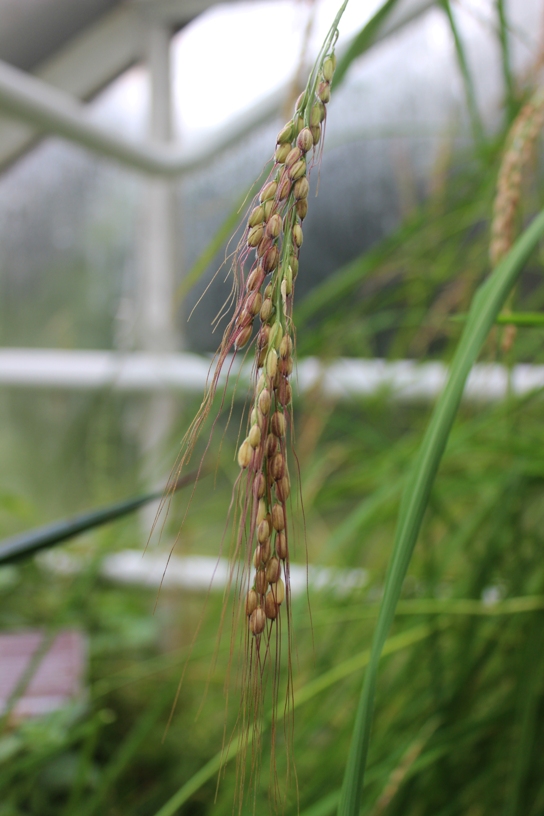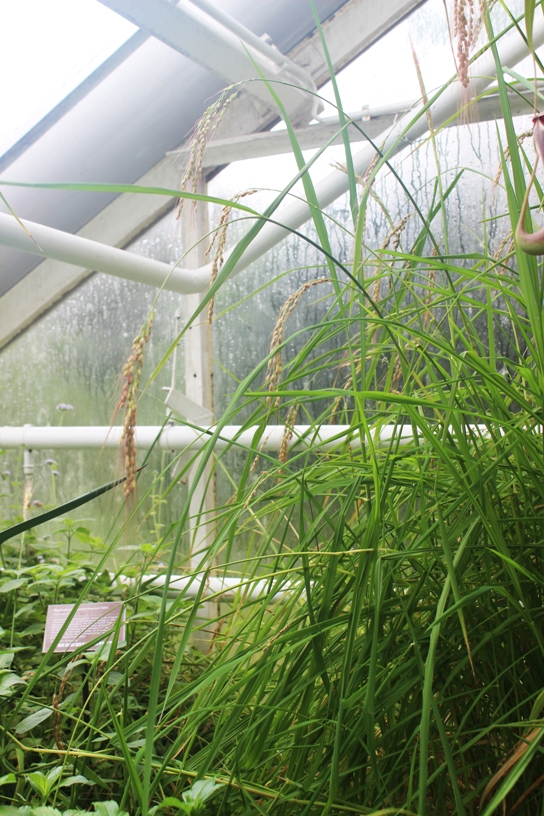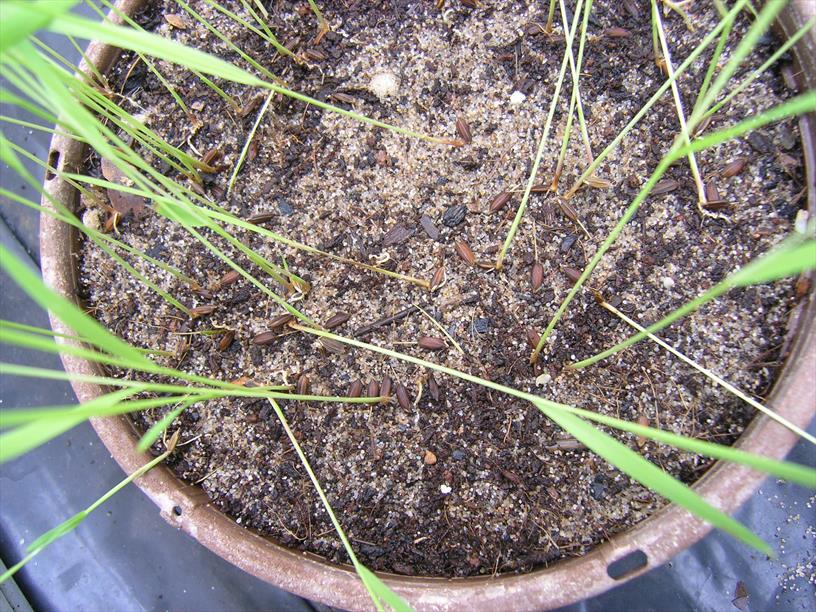Red Rice
Oryza glaberrima
Grass family (Poaceae)
Rice from the slaves
Like Asian rice, African rice is a traditional crop but much less well known. About 3,500 years ago this type of rice was already being cultivated in what is Mali today. In the days of the slave trade, rice travelled on the ships and, in this way, became introduced to America where large-scale rice cultivation then arose.
Following the invention of the rice hulling mill however, the African rice had to give way to the Asian rice because, unlike Asian rice, African rice was unable to be dehusked by the machinary and still needed to be manually threshed with a wooden mortar.
However, the African rice has not disappeared completely because in the interior of Suriname it is still grown by the Maroons, the descendants of runaway slaves, sometimes as a food source, but mainly for ritual use in ancestral ceremonies and funerals.
Themes
Crown jewel in the Hortus Botanicus Amsterdam.
African rice is better at tolerating fluctuations in water depth, iron toxicity, infertile soils, severe climates and neglect than other rice varieties.
Oryza glaberrima or African rice is thought to have been domesticated from its wild ancestor Oryza barthii (originally Oryza brevilugata) by people living on the floodplains of the Niger River some 2,000–3,000 years ago. The first mention of rice cultivation on the Upper Guinea coast was by Gomes Eanes de Azurara, from Portugal, in 1446.
Some Oryza glaberrima varieties also mature faster than Asian varieties (O. sativa), making them important emergency food. The newest varieties called 'New Rice for Africa' (hence NERICA) are a cross between Oryza glaberrima and Oryza sativa.
Some west African farmers, including the Jola of southern Senegal, still grow African rice for use in traditional ceremonies and rituals.
Details
| Description: | Grasses, incl. bamboes, 90-150 cm. |
|---|---|
| Distributions: | Sub-saharan africa, mali |
| Habitat: | Floodplains and marshes usually grown from seeds rather than transplanted. |
| Hardiness: | Warmer than 59 f (heated glasshouse - tropical) |


